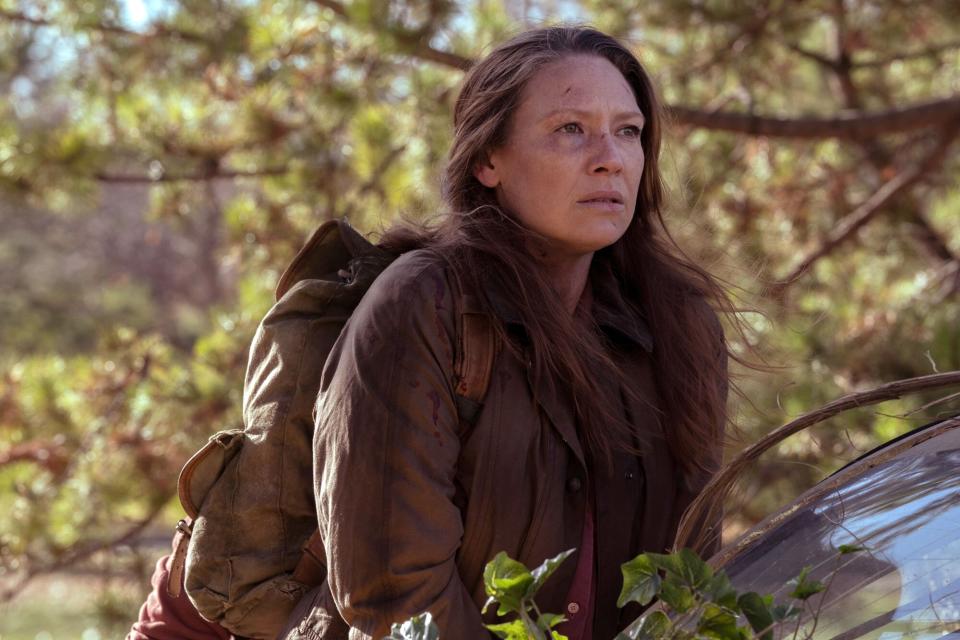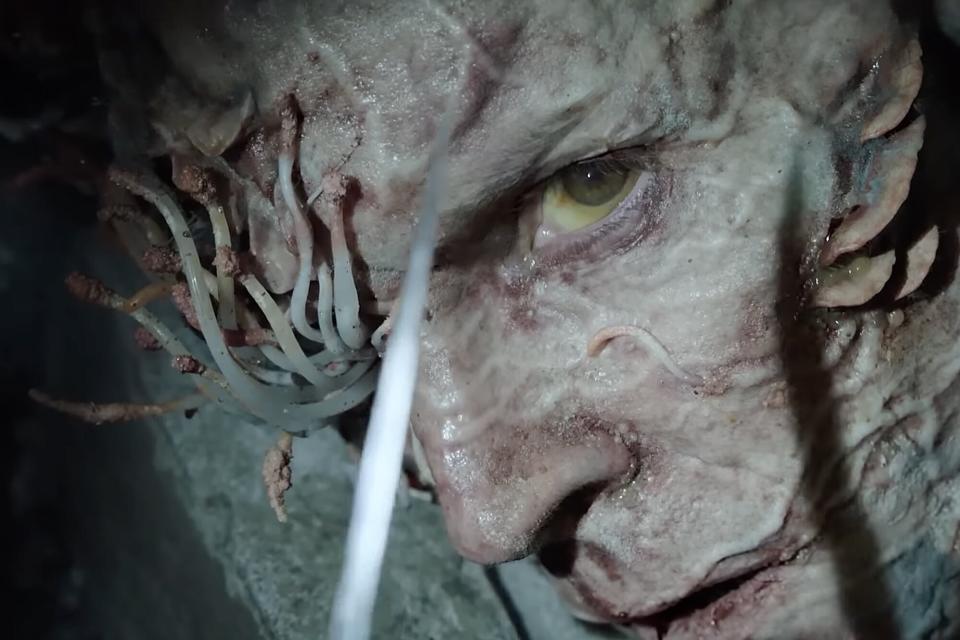The Last of Us creators explain that zombie kiss of death: 'These things don't have to get violent'
- Oops!Something went wrong.Please try again later.
- Oops!Something went wrong.Please try again later.
Warning: Spoilers from The Last of Us episode 2 are discussed in this article.
By now, those in the non-gamer community enjoying HBO's The Last of Us adaptation should be taking the hint: with two major character deaths over the course of just two episodes, no one is guaranteed a happy ending on this show.
Following the loss of Joel's daughter Sarah (Nico Parker) in the premiere, Anna Torv's Tess met her end in the second episode, which premiered Sunday night. Her death, however, played out differently than it does in the Last of Us game. Series creators Craig Mazin and Neil Druckmann confirm there's a good reason for that.
Joel (Pedro Pascal) and Tess successfully bring Ellie (Bella Ramsey) to the drop-off location, just as they promised Marlene (Merle Dandridge) and the Fireflies. But no one is there to meet them. No one living, anyway. So Joel has to make a decision. Does he head back to the QZ and forget all about this, or does he find another way to get Ellie where she needs to go?
Tess makes this decision for him. She reveals a bite wound from one of the infected that she got earlier during the scuffle with clickers and runners — names from the video game for the different kinds of infected. Before the infection overtakes her, Tess makes a dying wish for Joel to keep going with Ellie.

Liane Hentscher/HBO Anna Torv as Tess in HBO's 'The Last of Us'
In the game, Tess dies holding off invading FEDRA soldiers while Joel and Ellie make their escape. In the show, she distracts an incoming pack of infected, which leads us to a rather unique moment.
A runner spots Tess and instead of violently charging her as we've seen infected do before, it calmly walks over and gives her an open-mouthed kiss to allow tendrils of the evolved cordyceps fungi to pass into her.
"These things don't have to get violent unless you're fighting them from spreading [the infection] further," Druckmann, who also created the Last of Us game, explains to EW. "That is realized in this beautiful, yet horrific way with Anna."
The tendrils are a newer element to the show that Druckmann and Mazin blew out from the source material. While considering concept art from the video game for inspiration, they were reminded of tendrils that run underneath the skin of infected.
"Craig smartly said, 'What can we do to separate our infected even further from zombies?' It's more than just a bite. There's something else going on," Druckmann recalls. "I wish we had that aha moment immediately, but we brainstormed so many different things that they could be doing," he adds. "Some of them were pretty outlandish."
The cordyceps tendrils on the show create a hive mind effect, as viewers saw in episode 2. When one of the infected sees you, all of them in the area are now suddenly aware of your presence. It also "felt appropriate," Druckmann mentions, "for how this thing grows on the walls in the environment, how it would come out of [the infected]."
It's rooted in science. Mazin points to the opening scene of the entire series: the talk show segment where an expert explains how cordyceps can take over the body of an ant. "We thought it was pretty cool," he says. "It's very visual and it is very creepy, which I love."

HBO An Infected.
Druckmann clarifies that the tendril conversation was completely separate from the spores conversation. Spores are another element from the game: when characters encounter the cordyceps spores, they have to mask up or risk becoming infected. (Except for Ellie, of course.) For practical reasons, the writers and executive producers didn't include the spores in this capacity in the show just yet.
"Part of the issue with the spores is that you run into them quite a bit in the game, although not as much as people think, and if there were that many spores and they were airborne, that infection's gonna go even faster," Mazin notes. "It's hard to imagine how anyone escapes it, and people would probably be wearing masks all the time. In the game, the second you leave a spore space, you're like, 'Whoa, whoa, whoa! Get a mile away.'"
That said, Mazin clarifies, "I don't necessarily think we've eliminated spores from the universe of our show," he says. "We just haven't gotten there yet. It's possible that they may come back. We may have a plan, is my point."
"The way they were in the game didn't live up to how realistic the show has become," Druckmann agrees. "So we've had some conversations recently. I was like, 'Is there a way to pull it off?' If enough people show up on day 1, we might get to show the spores."
The Last of Us gave HBO its second-largest premiere of the past 12 years, with the Home Box Office network reporting 4.7 million viewers showed up to watch on debut night across linear TV and HBO Max. By the end of the second day, that number ballooned to 10 million viewers. If these numbers keep up, which would prompt HBO to proceed with a season 2 renewal, then the creators' plans will come to fruition.
Says Mazin, "If you want spores, watch the show."
Sign up for Entertainment Weekly's free daily newsletter to get breaking TV news, exclusive first looks, recaps, reviews, interviews with your favorite stars, and more.
Related content:

